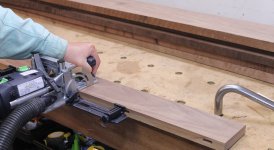usernumber1
Member
- Joined
- Aug 7, 2018
- Messages
- 467
Hello sirs,
any possibility of engineering something like the DD40 drill guide but for the domino.
https://www.timberwolftools.com/dowel-template-800-mm-with-quick-acting-clamping-device
I'm guessing a modified plate or some sort of "key" attachment for the existing base would work, just need a precisely machined template
thanks, love your work
any possibility of engineering something like the DD40 drill guide but for the domino.
https://www.timberwolftools.com/dowel-template-800-mm-with-quick-acting-clamping-device
I'm guessing a modified plate or some sort of "key" attachment for the existing base would work, just need a precisely machined template
thanks, love your work


